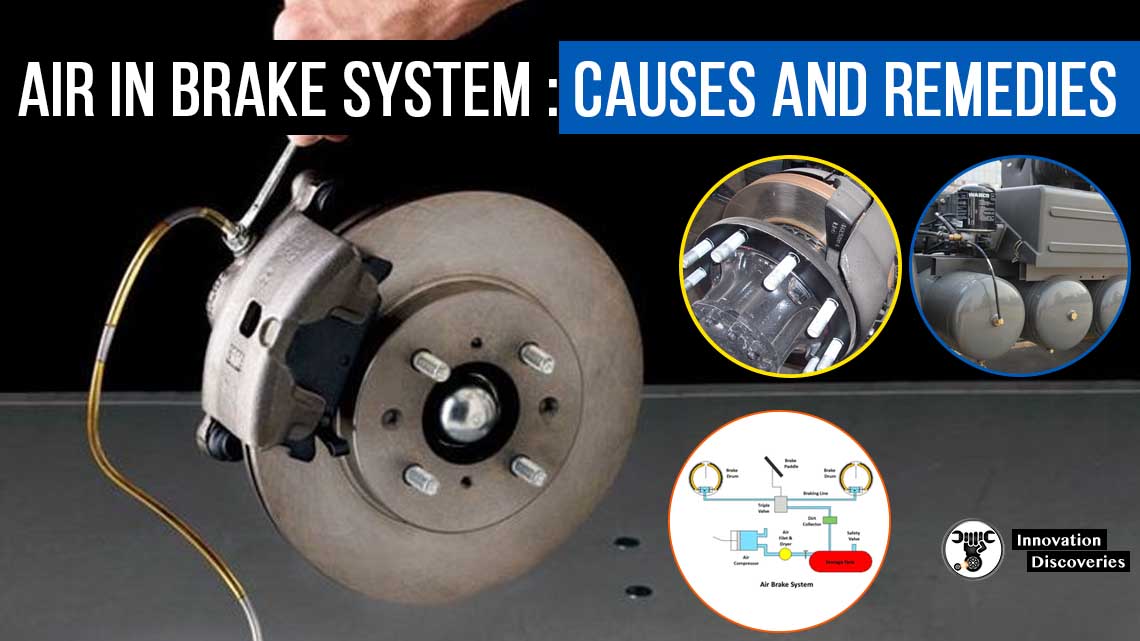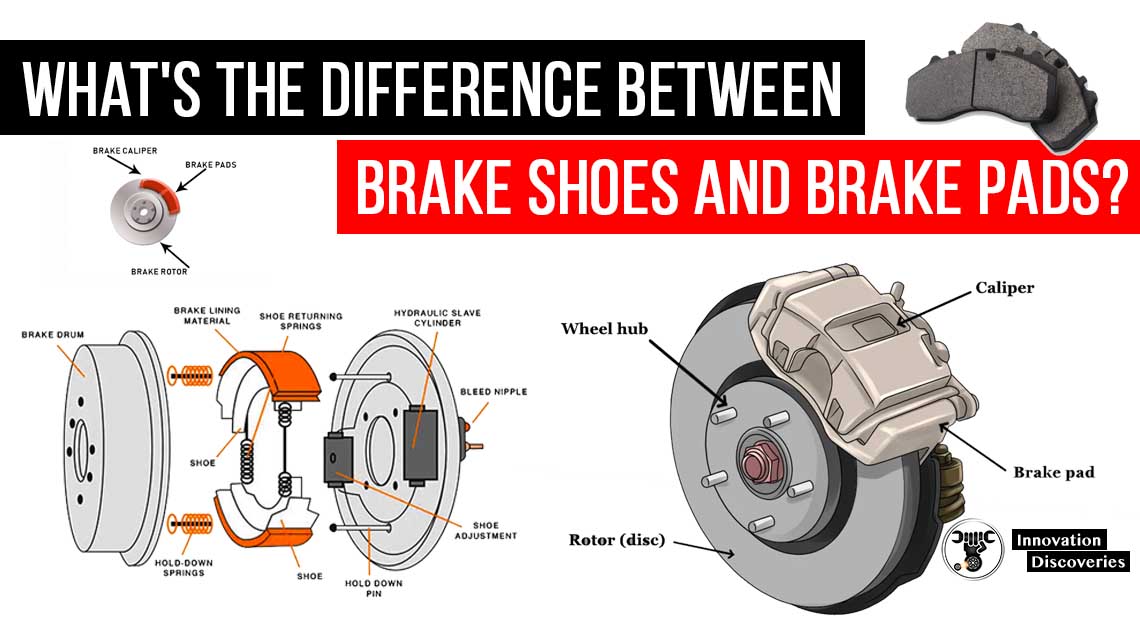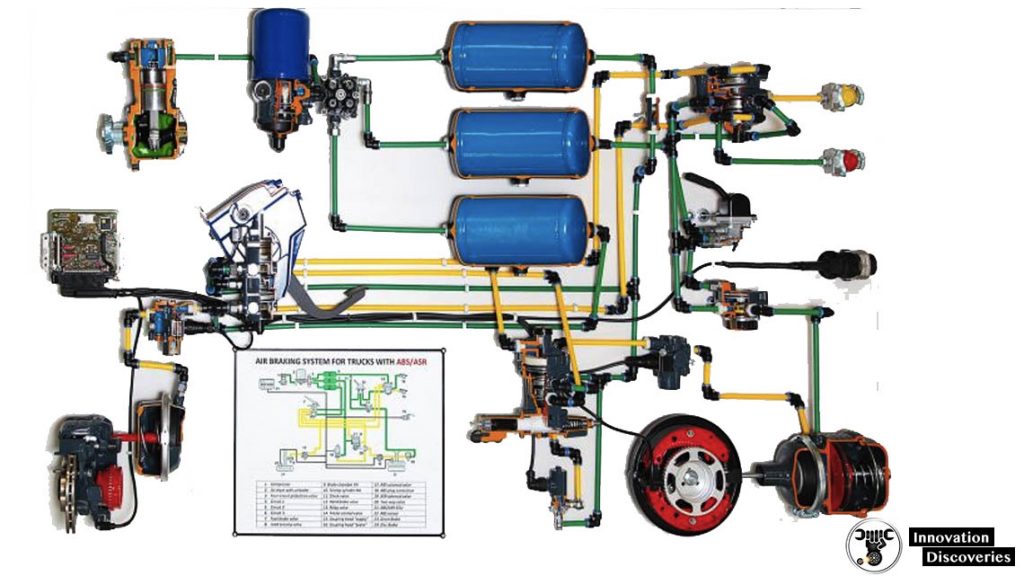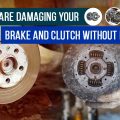
“Is your brake pedal feeling a little spongy lately?
Is your brake pedal going to the floor while you sit at a red light or when you’re braking at low speeds?
If so, chances are you have air in your brake lines.
Like the one found in most cars and trucks, a hydraulic braking system relies on brake fluid for pressure.
The whole system springs into action the moment you step on the brake pedal.
But have you ever wondered why your brake fluid level gradually decreases over time?
The fluid isn’t magically disappearing.
There’s a convenient explanation for this phenomenon.
READ: AIR BRAKE SYSTEM: COMPONENTS, WORKING PRINCIPLE, AND APPLICATIONS
As your brake pads wear thinner and thinner over several thousand km of use, the distance your brake pads need to travel to make contact with your rotors increases.
The brake calipers’ hydraulic pistons slowly extend to keep the brake pads at a uniform distance from the brake rotors as the pads wear.
It’s only a minimal distance, but if you consider that there are four sets of brake pads — each set wearing down a little bit more every time you touch the brake pedal — it’s easy to see how the system requires more brake fluid as time passes.
As you probably already know, your brake fluid level decreases as your brake pads wear down.
It makes sense, right? But here’s where a somewhat common brake problem begins.
Brake fluid resides in a sealed, air-tight reservoir on top of the master cylinder.
As the brake fluid level drops, air moves in to fill the void.
Wait a minute — didn’t we say that the system was air-tight?
Unfortunately, air does get into the reservoir over time, and it eventually makes its way into the rest of the braking system — including your brake lines.
Every time you open the cap to check your brake fluid level, you’re letting air into the system.
When the fluid is at the correct level, the air isn’t much of a factor; however, the more worn your brake pads are, the larger the void grows.
That’s one reason why it is so important to keep the fluid at the proper level.
READ: WHAT COLOUR SHOULD BRAKE FLUID BE?
Water is another factor that can cause brake issues.
Water can cause air to accumulate in your brake lines.
How so, you ask? Well, brake fluid is hygroscopic — it absorbs and retains water.
When the fluid has absorbed as much water as it possibly can — it becomes saturated.
Brake fluid is designed to have an extremely high boiling point;
However, if you subject your vehicle to excessive braking, like maybe a trip through the mountains, you can easily cause the brake fluid to heat up to this temperature or beyond.
When the brake fluid boils — especially when there is excessive water in the system — stream is a by-product.
READ MORE: WHAT’S THE DIFFERENCE BETWEEN BRAKE SHOES AND BRAKE PADS?

The braking system ultimately compresses this steam and turns it into water.
The air separates from the water, and before you know it, you have large pockets of air in your brake lines.
A spongy brake pedal is a terrible news, but there’s no need to lose any sleep over it; you probably don’t need a complete brake overhaul.
What you do need to do, similar to other brake problems, is address the situation immediately.
Brakes are one of the most crucial safety components of your vehicle.
Obviously, with a shoddy brake system, you’re putting your safety and the safety of other drivers at risk.
Read More:
So, what can you do?
It’s a safe bet that your braking system will be exemplary after you bleed your brakes.
This simple procedure will eliminate any unwanted air from the lines and restore your brake pedal pressure.
You can do this at home in your garage or take your vehicle to the local automotive shop to have it done for you.
While you’re at it, you should probably change your fluid, too.
Brake fluid, as we mentioned, becomes saturated and can deteriorate over time, so go ahead and replace it while you have the opportunity.
With fresh brake pads, all new brake fluid, and an adequately bled hydraulic system, your brakes should feel firm and as good as new.”
Also, read: DIFFERENCE BETWEEN DRUM BRAKE AND DISC BRAKE
Also, read: The Importance of Measuring Brake Pad Thickness
More About Braking Systems
- Top 5 Causes of Steering Wheel Shakes at Low and High Speeds
- HOW HYDRAULIC BRAKE WORKS?
- AIR BRAKE SYSTEM: COMPONENTS, WORKING PRINCIPLE, AND APPLICATIONS
- HOW DOES REGENERATIVE BRAKING WORK?
- 8 REASONS YOUR CAR IS MAKING GRINDING NOISE WHEN BRAKING
- Regenerative Braking System
- JAKE BRAKE VS. EXHAUST BRAKE: WHICH IS BETTER?
- SQUEALING BRAKES AT LOW SPEED: CAUSES AND SOLUTIONS
- TROUBLESHOOTING A HARD BRAKE PEDAL
- CONVERT DRUM BRAKES TO DISC BRAKES IN 3 STEPS!
- CAUSES OF THE BRAKE WARNING LIGHT COMING ON
Download:BRAKES, BRAKE CONTROL AND DRIVER ASSISTANCE SYSTEMS: FUNCTION, REGULATION AND COMPONENTS
Visit Forum
Visit Our Friendly Website






